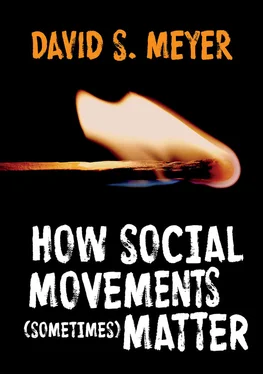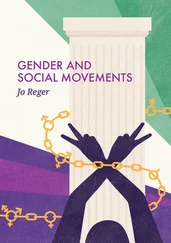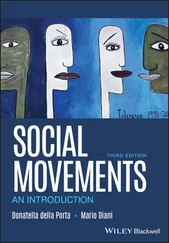Telescoping out from the Boston Tea Party, we encounter the complications in making an assessment of the influence of social movements. Even a simple reading of the event must situate it in a larger independence movement that, over a period of years, produced a war and a new nation. Even then, evaluating that movement as a success means neglecting the lofty aspirations and concrete expectations of many of those who turned out for the effort. For these reasons, the Tea Party provides a good way to start examining how social movements matter. The Tea Party and the larger American Revolution of which it was a part was a distinct series of events, whose outcomes were defined by context and contingency. Nonetheless, we can use it to establish and define concepts that will be helpful in understanding a wide range of other campaigns in a broad variety of contexts.
Elements of Political Protest
“ Social movement ” is something of a catch-all term, designating organized and sustained challenges to some kind of authority. Movements are comprised of groups and individuals who share some common aims, but also differ on issues of ultimate goals, as well as the best ways to achieve them. Movements include ideas and actions, which generally play out both in mainstream politics and outside the mainstream. A movement links discrete events, like demonstrations, meetings, and speeches, over an extended period of time. Using movements, organizers aspire to change both the world outside them and the ways in which participants live their lives (Meyer 2014). Inherently unstable, movements can grow into revolutionary campaigns, where insurgents seek to control territory and displace a governing regime. They may also develop into more routine political organizations and practices, in which organizers make accommodations with authorities and pursue their interests in less disruptive ways.
A grievance is a source of dissatisfaction that activists view to be actionable. Unpleasant cold temperatures on a winter’s day may be frustrating, but people don’t see collective action as a route to redress. Individuals can bundle up, go inside, or just shiver. In contrast, growing belief that a practice or policy could be fixed leads people to unite with others and take purposeful action. The grievance can be one that potential recruits already know, but don’t view as either wrong or changeable, like female genital mutilation, wages, work conditions, or racial or religious segregation. In such cases, organizers have the job of suggesting alternatives, and giving their would-be supporters a sense that change is possible. Part of the process involves showing people that the issues they face aren’t peculiar to them; that a problem is collective, not personal.
Alternatively, a grievance can be constructed around a distant threat, like nuclear weapons or climate change, issues about which most people think and know very little. Here too, organizers have the task of providing education, albeit with the difficult task of helping people to define their interests more broadly than they normally do. In all cases, identifying a grievance and alternatives is a step toward bringing people into a movement and into action of some sort. Organizers turn grievances into claims, that is, demands upon those in authority.
Mobilization means engaging people and getting them to take directed action in the service of some set of goals. Organizers recruit and direct supporters by convincing them that something is wrong, changeable, and that their actions might make a difference (Gamson and Meyer 1996; Rosenstone and Hansen 1993). They use the raw material of social problems and conditions, and offer directed plans for action (Snow and Benford 1992). But recognizing a problem and accepting a cause are only steps toward concerted action. Engaging people in a movement is hard work. In seeking to mobilize others, organizers can craft direct appeals, through conversations and meetings, or retail efforts to publicize the cause and their efforts, through newspapers and broadcast media. The modes of communication change over time, of course, and social media provide more accessible ways to reach people directly and wholesale (Bennett and Segerberg 2014; Earl and Kimport 2011; Rohlinger 2015, 2019; Tufekci 2017). Similarly, recruitment often comes one individual at a time, building new organizations, but the most efficient way to build a movement is to recruit and engage the already organized. Speaking at a meeting at a church or sports team or professional association allows an organizer to reach people who are already able to do something beyond the work of maintaining their lives, and people who already share some kind of connection.
Social movements arise only after governance structures are in operation, and those structures or governments come with strategies to contain discontent, which also comprise a set of political opportunities. These opportunities constrain what issues can be contested, who can engage in making claims, and how they can try to advance their beliefs. Authoritarian leaders, for example, claim infallibility and legitimacy by default. If God had wanted someone else to be king or pope, someone else would be doing it. In joining in a challenging movement, individuals have to confront their own beliefs about the vulnerability of a government to their claims. What’s more, authoritarians usually also enjoy the capacity to inflict severe punishment on dissenters. Challengers risk fines, imprisonment, isolation, and even their lives. It’s not that there are no people with grievances in authoritarian states like North Korea, for example; it’s just that there’s no available space for organizing or expression. With few dissenters and no qualms about respecting due process or civil liberties, authoritarian states can brutally repress incipient movements, eliminating the challenge and demonstrating a cautionary example for other would-be dissidents.
Take, for example, the abbreviated White Rose campaign in Nazi Germany. Domestic resistance to Hitler evaporated relatively quickly, but in the summer of 1942, a handful of Christian students at the University of Munich drafted and distributed six leaflets, sometimes through the mail, sometimes by hand delivery, and sometimes just leaving the papers where someone might pick them up. The papers criticized Hitler and the Nazis and called for “passive resistance.” Later, they escalated to posting political graffiti near the university (Nuborn and Dumbach 2007 [1986]). Once identified and reported by a custodian, the members of the collective were arrested, interrogated, summarily tried, and executed. 2A moral exemplar perhaps, the tragic story was a deterrent to others who might criticize the regime from within. The key to understanding the extremely limited influence of the White Rose campaign lay not in its integrity or its strategies, tactics, or ideas, but in the larger political context.
At the other end of the spectrum, democracies invite and channel participation in politics to less threatening means of engagement. The minority that loses an election will always hear that they can organize and compete more effectively … next time. Campaigning for office entails accepting the rules and restrictions of governance, and managing conflicts with an idea toward winning elections, in which the identification of a person or a party can trump any connection to issues. It can also entail an acceptance of unfavorable policies in the moments in between. Learning to live with losses is somewhat easier if you believe that they are temporary and reversible through your efforts.
The rules of political engagement vary greatly across democratic polities, and those rules also shape available opportunities for activists pushing a cause. Some governments strictly regulate the funding and conduct of electoral campaigns, whereas others allow longer and more expensive efforts. In systems that offer single member district representation, we’ll generally see two dominant political parties, and specialized concerns that attract a smaller share of the electorate, say workers or the environment, have to make their peace with one of the major parties (Duverger 1954). In contrast, in states that host proportional representation systems, starting a new political party based around particular constituents – like Israeli Arabs or German Greens – is always a possibility.
Читать дальше












